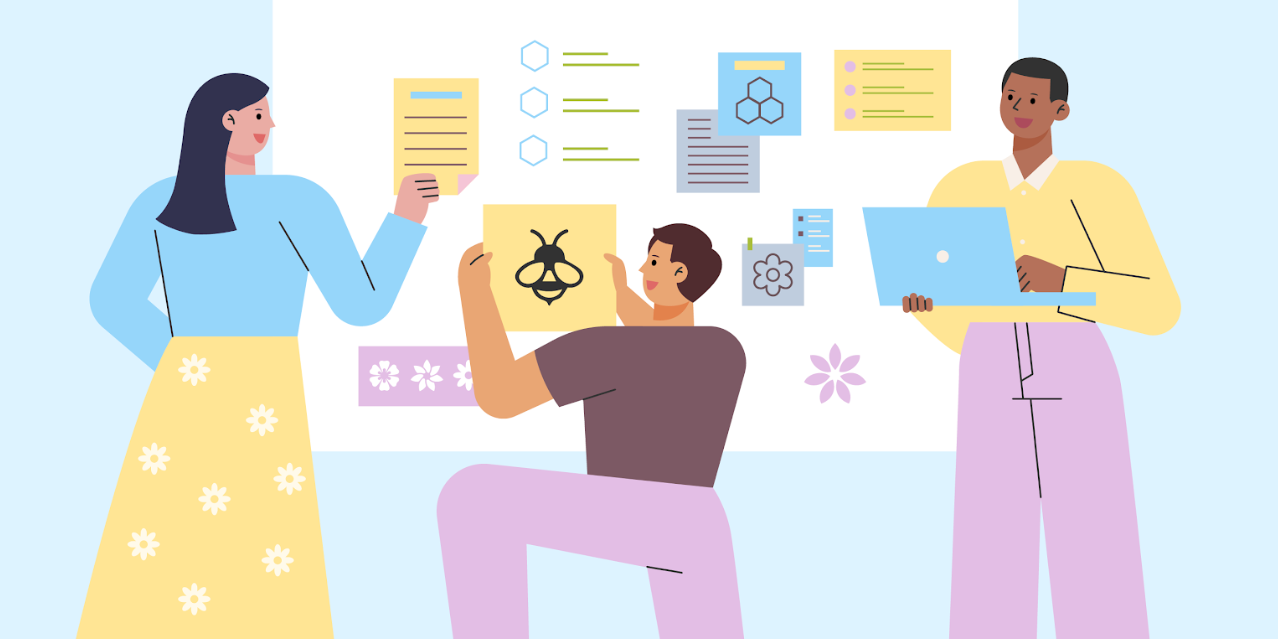Using a questions board to promote student autonomy and engagement

Have you ever had a student ask you why they are learning a particular topic? Sometimes, connecting the curriculum to students' interests can be challenging. Starting a new topic with a collaborative class brainstorm is an excellent tool to engage students, empower them to find answers, and promote student-driven learning.
You'll notice that question boards feature in a number of our newest units, including The Nervous System and Waves. This article is your go-to guide for using a questions board with your students.
What is a questions board?
A questions board is a visible record of questions generated by students. These questions are based on the unit's Guiding Question or real-world context, which is crafted to build curiosity and drive learning. In The Nervous System, the Guiding Question "How can your gut influence your mood?" is repeated throughout the unit, prompting students to connect their learning back to this question.
Why use a questions board?
The questions Board supports you in facilitating a coherent learning experience, engaging students in the relevance of what they are learning, and connecting students' learning across lessons. It allows students to link the questions they have asked to the information they have learned as their understanding of the unit's phenomena grows.
Utilising a questions board gives students a strong sense that their questions are driving the learning, which increases their engagement and motivation.
The process of questioning and then returning to and reflecting on these questions supports students' metacognition. Each time they revisit their questions, they consider how their thinking has changed and what they have learned.

How do I use it with students?
Real-world contexts and guiding questions are included within each Stile unit, providing the perfect opportunity to incorporate a questions board into the learning experience.
Creating the board uses simple steps: students record their questions, organise their ideas, and decide on a representative sample. The process, outlined below, is rich, collaborative, and integrates lots of important skills. Overall, it should take 20–30 minutes.

We've developed some super helpful resources to guide you and your students through the process of creating a questions board. Check out our template lesson in the Teacher Resources unit for step-by-step guidance and our poster series for beautiful displays to use in your classroom.
Once you've set up your board, you'll be prompted to return to it throughout the unit with in-lesson banner images that state the guiding question. Use these opportunities to encourage students to review their questions, consider what they've learned, and whether they can now answer any of their wonderings. They may also formulate new questions.
We encourage you to refer to the board as you begin and complete lesson activities to help students make connections between their questions and what they have learned.

What does it look like?
Your questions board will look different depending on your classroom and circumstances. Below are some ideas that might help you decide how to create yours.
If your class is always held in the same room, you might consider using:
- Non-permanent glass markers on a large window to record student questions
- Post-it notes to record student questions and sticking these to a window or wall (be sure to test out the stickiness of your post-it notes first!)
- Index cards for students to record their questions and pin these to the wall

If your class moves between classrooms, your questions board will need to be portable. You might consider using:
- Coloured markers on large pieces of paper for students to record their questions. These pages can be carried with you between classrooms
- Post-it notes for students to record their questions, and sticking these to large pieces of paper that can be moved between classrooms
If you teach in a distance learning environment, you'll need to have a digital questions board. You might consider using:
- A separate Stile lesson that contains Live Brainstorm questions for students to record their ideas
Give it a go! And let us know how you get on. We'd love to hear about it. You can reach me at clare.feeney@stileeducation.com

